Unpretentious frost-resistant variety of honeysuckle "Morena"
Honeysuckle is an excellent tasting and healthy crop. The content of magnesium and other useful substances exceeds all other berries and fruits. One of the main advantages is its early ripening, which makes it indispensable for improving health after a long winter.
Description of the honeysuckle variety Morena
Morena is a variety of honeysuckle whose edible berries grow on bushes. Suitable for growing in cold climates.
The plant is easy to care for and quite resistant to diseases and insects. Over the years, it has become a favorite among gardeners and has become one of the most common shrubs in private gardens.
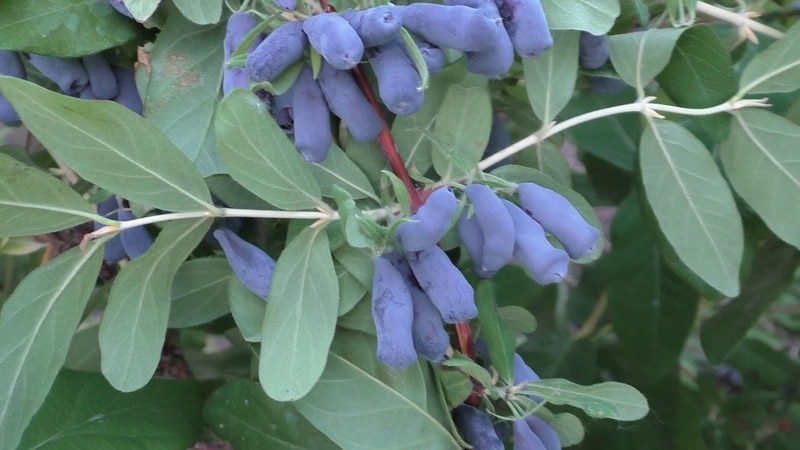
Origin and development
By crossing the varieties of Kamchatka honeysuckle and Turchaninov, a new one was obtained - Morena. It performed well at low temperatures - the plants developed well and produced large berries with a dessert taste.
Breeding history
Is of Russian origin. It was bred in the city of St. Petersburg, thanks to the efforts of breeders A. OV. Kondrikova and I.N. Plekhanova at the Vavilov Research Center.
Characteristics, description of appearance, taste
The bush grows up to 170 cm in length and has the shape of a ball. Young branches are twisting, thin, flexible, greenish-brown in color. The leaves are large, lanceolate, slightly bent in the middle, bright green. The crown density is average.
Important! Due to its beautiful appearance, Morena is often used in landscape design.
The berries are large in size, oblong in shape, up to 3 cm long, weighing up to 1.0-1.2 g. The color is blue, with a dense waxy coating, which is why the fruits appear blue. The surface of the berry is uneven. The fruits have a dense skin, which allows the harvest to be transported over considerable distances.
The taste is sweet and sour, without bitterness, the aroma is weak. The variety is classified as a dessert variety. Rated by tasters 4.5 points out of 5 possible.
Features of the use of the variety
Morena berries have good taste and contain many microelements and vitamins. Ideal for making jam, compotes and other preparations. It is also useful to eat it fresh. You can grind it with sugar and add it to fruit drinks and cocktails.
Suitable for freezing. After defrosting, they do not leak and retain their shape. Can be dried and added to tea.
Fresh fruits contain:
- pectin;
- organic substances, acids;
- iron, copper;
- iodine;
- phosphorus;
- potassium;
- silicon;
- zinc;
- sodium, calcium.
Important! 100 g of Morena honeysuckle contains 54 mg of ascorbic acid.
Productivity and fruiting
Fruiting lasts until the end of September, with proper care - until the first half of October. Productivity is assessed as low. On average, one bush produces from 1.5 to 3 kg of fruit. The berries are collected in 2-3 doses, every other day. After planting the plant, ripening of the crop begins after 2 years and then continues annually.
Important! The berries do not last long - 2-3 days in the refrigerator.
Ripening period
They belong to the mid-early category. The first fruits appear in mid-June, early July. The ripening period of fruits mainly depends on the availability of sunlight. Honeysuckle flowers easily tolerate frosts from -6 to -7°C.
Resistance to diseases and pests
The vast majority of infections are not scary for Morena, who has Kamchatka roots. In damp and cold summers or with improper care, the plant can be affected by fungal diseases such as:
- Rust. With insufficient watering, poor feeding. It appears in the form of pustules of various shapes on the leaves of the plant, the color of rust. After their destruction, a fine powder of identical color spills out. Treated with drugs containing sulfur: Cumulus, Strobi, Polyram, etc.
- Powdery mildew. The bush becomes covered with white spots, on which drops of liquid appear over time. It is treated with a wide range of drugs: Raek, Topsin, Fundazim, Fundazol, etc.
From pests dangerous:
- whitefly, aphid, spider mites - drugs Actellik and Rogor;
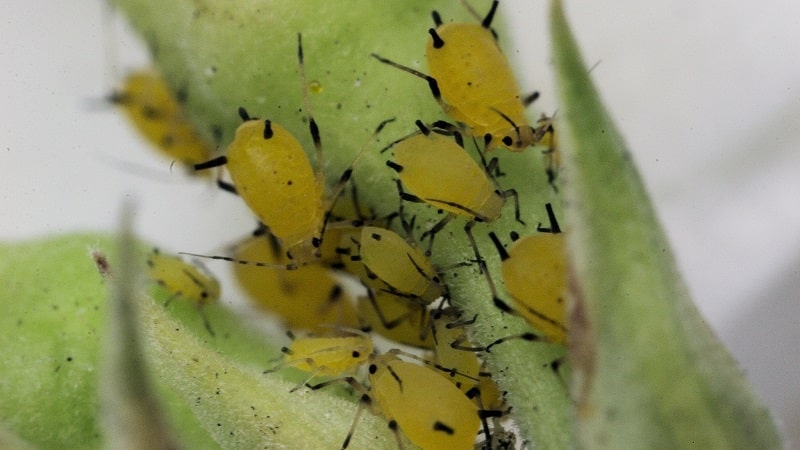
- scale insect, leaf roller - various insecticides.
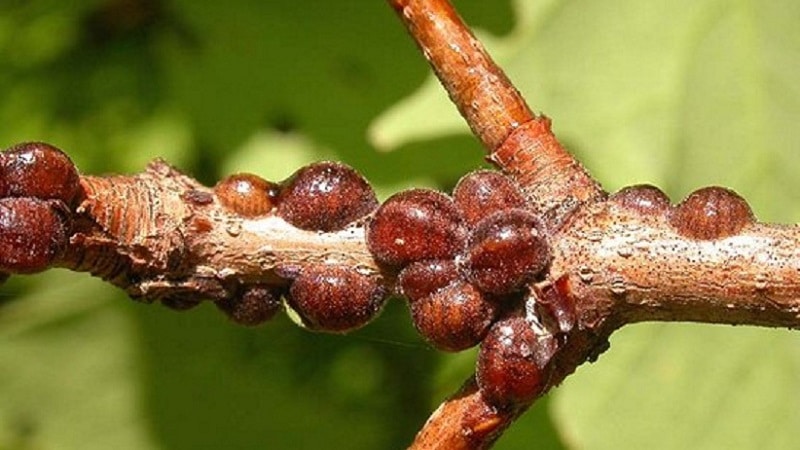
Treatment with products is carried out 2-3 times with a two-week interval.
Attention! During the fruiting period, treating with fungicides is strictly prohibited. It is necessary to use biological preparations or folk remedies (herbal infusions with the addition of soap, ash, formulations with tobacco, hot pepper).
Resistance to cold and drought
The winter hardiness of the variety is above average. Without shelter, the bush can withstand frost down to -35°C Celsius.
In dry seasons, sufficient watering of the plant is necessary - up to 25-30 liters for each bush.
For which regions is it best suited, climate requirements?
The variety is considered one of the best for cultivation in the North-West of the Russian Federation. It also feels great in any other territory of Russia. In 1995, it was included in the State Register of Selection Achievements for all regions.
The main advantages and disadvantages of the Morena honeysuckle variety
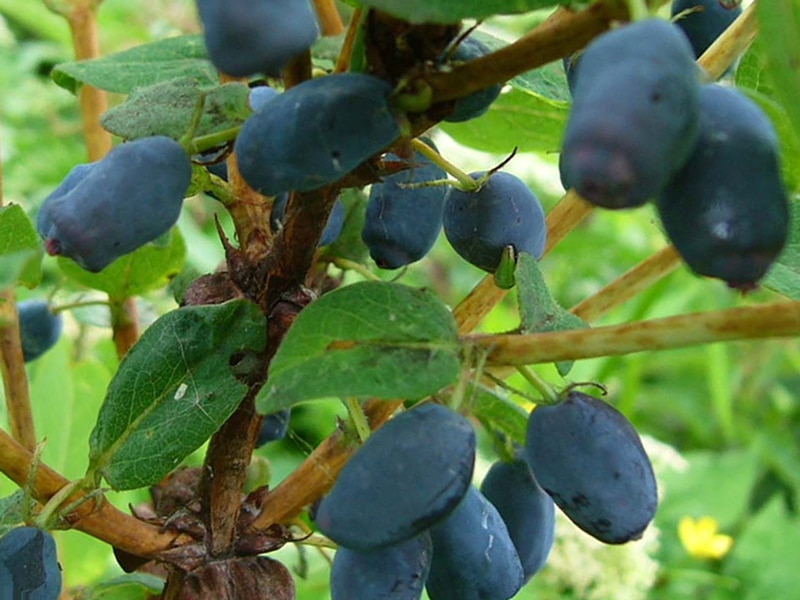
Main advantages:
- constant yield indicator;
- frost resistance;
- fairly large fruit size;
- ease of care;
- pleasant dessert taste;
- possibility of cultivation in any region of the country;
- increased content of vitamins and microelements in the berry;
- resistance to diseases and pests;
- minimal fruit shedding;
- early ripening.
The most significant disadvantages:
- mandatory presence of pollinators;
- low yield.
Difference from other varieties
In comparison with other species, Morena honeysuckle is definitely inferior in frost resistance to a variety like Blue Spindle, which can withstand cold temperatures down to -45°C. In terms of taste, there are also berries that are ahead of Morena on the rating scale. For example, Gzhelskaya and Baykalovskaya scored 4.8 points, Sibiryachka and Strezhevchanka - 4.9.
The fruits of the Bachar Giant are three times larger in size than the Morena berries. But still, an impressive number of positive properties and reliability in cultivation, proven by many years of experience, make Morena a worthy participant among the whole variety of honeysuckle varieties.
Agricultural technology
Let's look at the features of growing the Morena variety.
For planting honeysuckle It is necessary to choose a place that is sufficiently illuminated by the sun. If you choose the shady side, the plant will also develop and bear fruit, but the loss of yield will be colossal. You should not plant Morena in a draft, or in places with increased stagnation of moisture.
Preparing for landing
When purchasing seedlings, pay attention to their appearance. A healthy plant meets a number of criteria:
- elastic shoots;
- identical internodes;
- flaky bark is normal;
- root system without damage;
- unshortened shoots;
- absence of mold and rot;
- fresh and pleasant smell from the plant.
Soil requirement
It is necessary to plant in low-acid soils, which must be loose and nutritious. It is worth enriching the soil with organic fertilizers before planting.
Important! Do not plant in acidic soil. To reduce acidity, dolomite flour or lime is added to the hole.
Dates, scheme and rules of planting
The best time is autumn or end of summer. Ideally the last week of September. This way the bush will have time to take root well and bud by spring.
Algorithm for planting honeysuckle:
- Divide the area into rows, 2-3 m apart.
- Determine a place for each plant at a distance of 1.5-2 m.
- Dig a place for planting, with a diameter of 40-45 cm for each bush.
- Pour water into the hole and wait until completely absorbed.
- Pour manure or compost into the prepared hole, about 10 liters. You can add potassium sulfate or superphosphate.
- Mix the soil with fertilizer and form a small mound.
- Place the plant in the hole, spreading the roots over the surface of the mound.
- Sprinkle soil on top, deepening the root collar by 3-5 cm.
- Compact the soil.
- Water the plant - 10 liters of water.
- Sprinkle the top with dry soil.
Important! You should not shorten the branches before planting - this procedure is fraught with poor survival of the plant.
Features of cultivation
The first two years do not feed, since the fertilizers applied during planting are sufficient for a young plant. In early spring, it is recommended to water the bush with a solution of urea or ammonium nitrate.
During active growth, systematic watering is necessary so that the area around the trunk does not dry out. Loosening the soil to 5-8 cm in depth also has a beneficial effect, to provide oxygen access to the root system.
Nuances of care
Top dressing
It must be done regularly, after 3 years from the date of planting.
- The growing season is early spring. Nitrogen fertilizers are applied by scattering in the root zone. For good development of flowers, leaves, shoots.
- The period after harvest. Phosphorus and potassium fertilizers to restore strength, laying the groundwork for a good future berry picking.
- The period of flower formation. Once every 3 years or annually on poor soils. Compost and humus (bucket) for each bush. Manure and bird droppings are also suitable.
Trimming
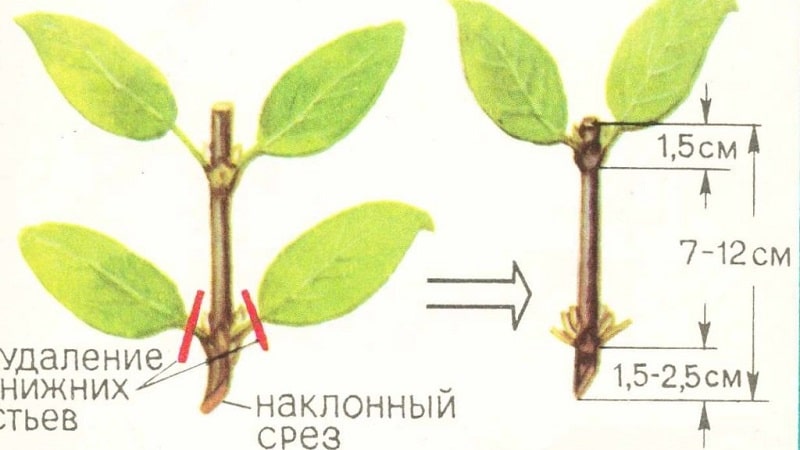
Produced depending on the age of the bush.
- From 5 to 15 years, broken, diseased, dried out branches growing inward are pruned.
- From 15 to 20, old branches are cut out to renew the bush.
- After the 20th year, a decrease in yield occurs. All branches are removed down to stumps, 15-20 cm high. This procedure rejuvenates the plant and it can bear fruit for another 5-10 years.
Pollinators
Self-sterile hybrid. For a good harvest, pollinating varieties are planted next to the bush:
- Viola;
- Amphora;
- Malvina;
- Nymph;
- Blue bird;
- Blue spindle.
Attention! Pollinators should have identical flowering times to Morena.
Preparing for winter
Morena is a frost-resistant crop that does not require additional shelter for the winter. Even at -30°C the bush does not need to be covered. Bred in harsh climates and adapted to it.
Reproduction
Best ways:
- By dividing bushes. A young bush is obtained from the central root by separating young roots with shoots.
- Using layering. The branch is sprinkled with earth, and as the roots form, it is carefully separated from the main bush.
Harvesting
Morena has a short harvest period. Despite the low shedding, the fruits will not hang on the branches throughout the summer.
The entire harvest is harvested in 2-3 doses, approaching the bush every other day.
Difficulties in growing
This variety of honeysuckle is easy to care for and does not require special conditions for planting.
It is enough to follow some rules necessary for the proper growth and development of the plant:
- plant the plant on the sunny side, without drafts;
- plant pollinating bushes nearby on the windward side;
- apply all necessary fertilizers in a timely manner;
- trim bushes on time.
Tips and reviews from experienced gardeners about the variety
Ekaterina, Voronezh: “Morena honeysuckle grows in my garden along with pollinating bushes - Kamchadalka and Long-fruited. The plant has grown to 140 cm. I blame the climate for being too warm. And the berry tastes very tasty and sweet.”
Elena, Ekaterinburg: “Of all 10 varieties of honeysuckle, Morena is the most juicy and pleasant to taste. It tolerates winter very well. This summer was dry and hot, but my Morena pleased me with a rich harvest of delicious berries.”
Conclusion
Morena is an early variety that thrives even at very low temperatures. The plant does not require special conditions for good growth and flowering, and has good immunity to diseases and pests. Thanks to its beautiful appearance, it will fit perfectly into any garden plot and become its decoration.